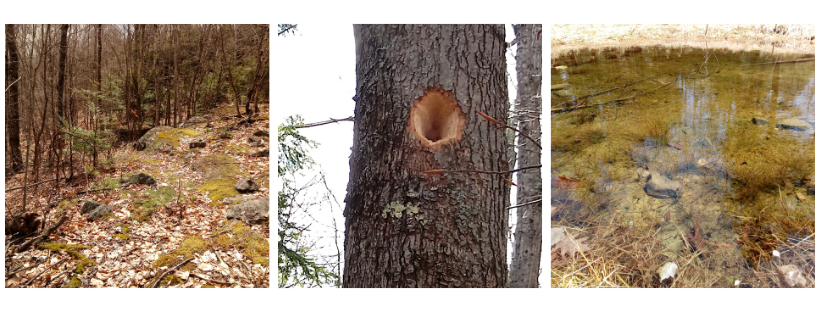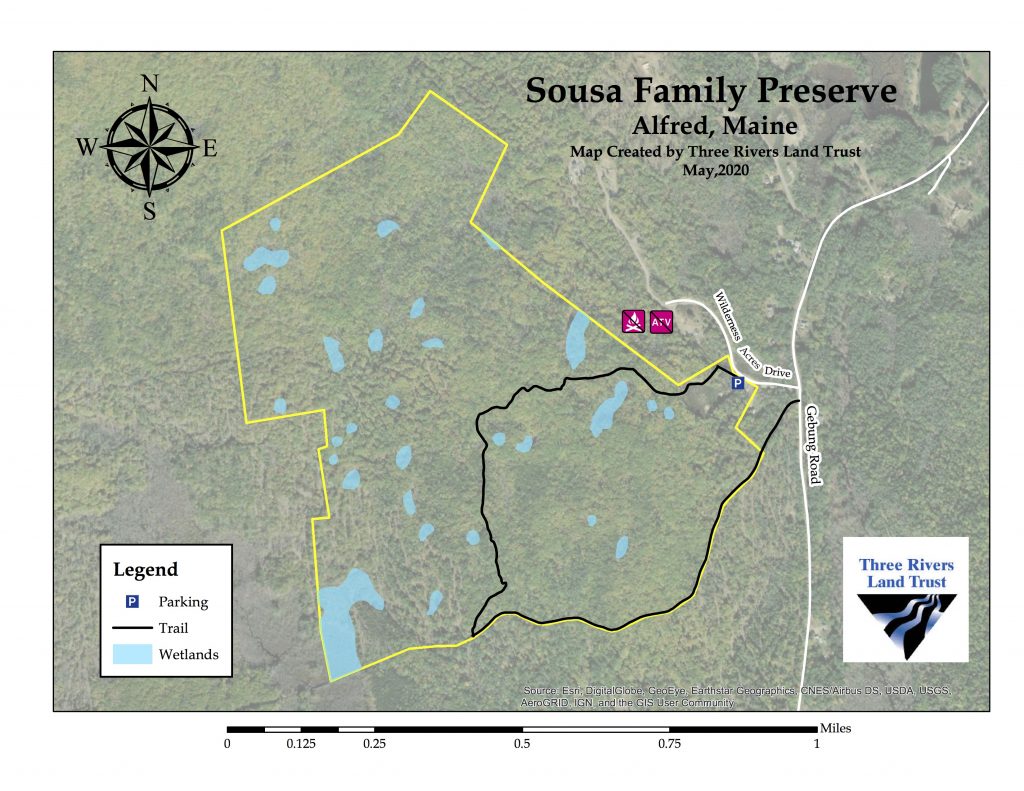
This 1.75 mile trail can be rough and wet in places. Walkers should be prepared with good footwear. Please keep an eye out for some rocks and stumps in the trail path. After you cross over the bridge, look for the blue blazes on your right heading up the hill. It can be easy to overshoot. There are steep portions of trail that in fall are covered with slippery leaves. Young children and less surefooted walkers may have a difficult time.
The trailhead is accessed via the entrance to Wilderness Acres Drive, a dirt road with a blue road sign, off Gebung Road. (Google Maps mislabels Wilderness Acres as Pheasant Run, and Pheasant Run is not a through road, so only use the Wilderness Acres entrance.) Parking is on the left at the start of a small gravel road that has been blocked off with three boulders. The trail begins at the “Sousa Family Preserve” sign. It can be overgrown at times but the path should be visible.
The southern part of the trail is an old road once known as Guinea Road (not open to vehicles). Where the trail ends on Gebung Rd, visitors should be mindful of traffic and use caution walking back to the parking lot. (There is a road on the left before Gebung that brings you back to Wilderness Acres so you can avoid walking along the main road.)
Sousa Family Preserve comprises 213 acres off of the Gebung Road in the Walnut Hill Focus Area. It has some important vernal pools and precious wetland species and habitat. This acquisition came after a successful proposal was submitted to the Maine Natural Resource Conservation Program (MNRCP), administered by The Nature Conservancy. It is a “forever wild” property that will never be logged. Little if any logging has been done there since the great fire of ’47. The wetland areas are dominated by red maple and hemlock, although green ash, black ash, yellow birch, black birch, elm, and black gum are also present to a variable degree. One black gum tree was core sampled and found to have been growing for 330 years or more, which dates it to at least 1682.

